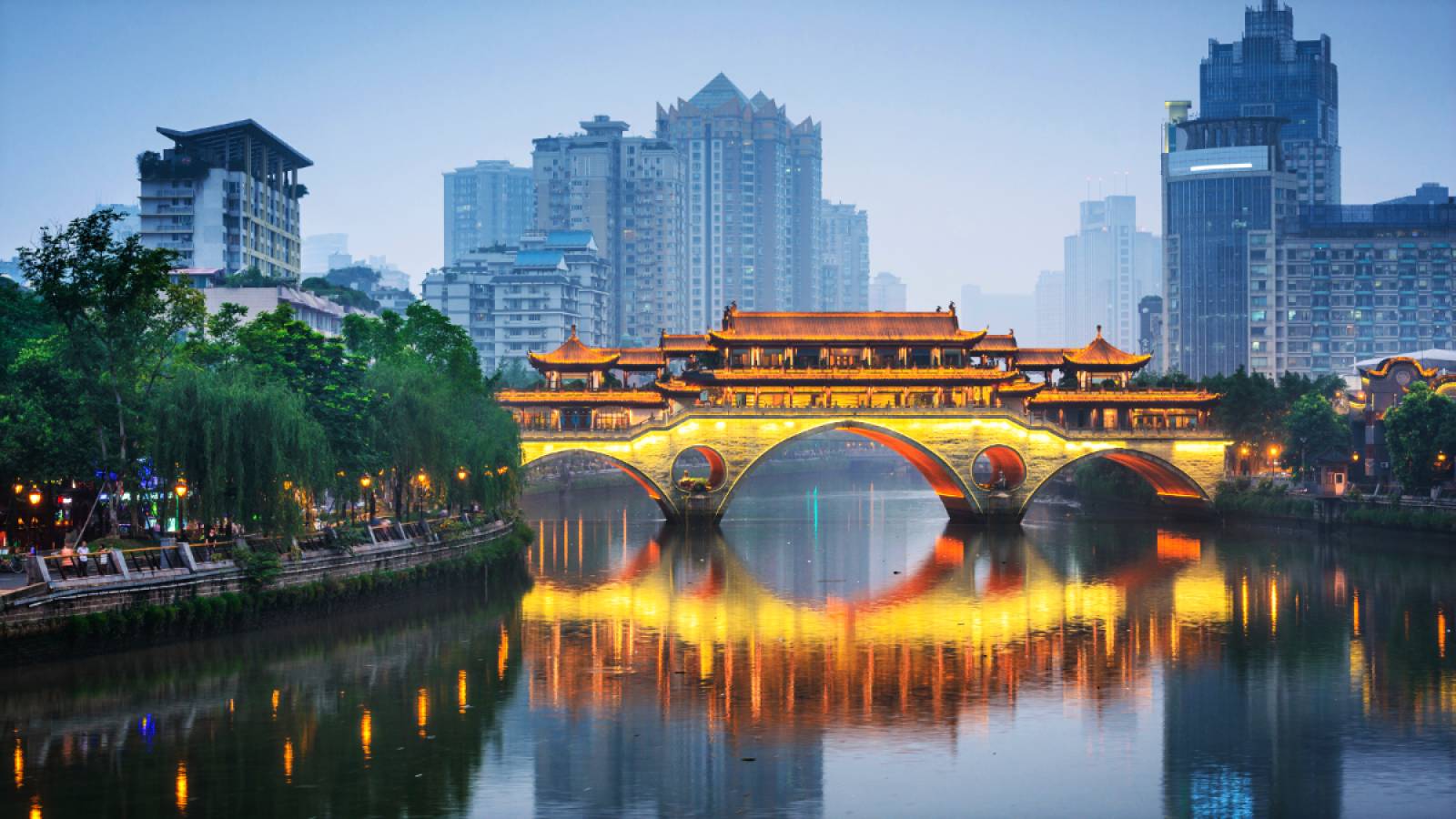World Bank
China
With a population of 1.4 billion, China is the most populous country in the world and the second-largest economy. UrbanShift is engaged in three cities and one city cluster in China: Chengdu, Chongqing, Ningbo, and Chengdu-Chongqing Economic Circle.
The UrbanShift project in China is implemented by the World Bank in partnership with the China Center for Urban Development (CCUD) under the National Development and Reform Commission (NDRC). City partners include the People’s Government of Chengdu Municipality, People’s Government of Chongqing Municipality, and People’s Government of Ningbo Municipality.
As the fourth largest country on the planet by area, China’s vast terrain is home to an astounding variety of ecosystems, from mountains and deserts to tropical coastlines and alpine forests. As one of 17 megadiverse countries, China harbors nearly 10% and 14% of all flora and fauna on Earth, including threatened species such as the pangolin, snow leopard, and Himalayan brown bear.
Over the past few decades, China has transformed from an agrarian to a manufacturing and services-based economy, with over 90% of its $14.4 billion GDP (2019) dominated by the secondary and tertiary sectors. The rapid industrialization of the country has been accompanied by a corresponding increase in urbanization; today, over 60% of the population resides in cities, compared to under 18% in the late 1970s. Owing to this unprecedented economic and urban growth, China lifted more than 600 million people out of poverty between 1981 and 2004.
- POPULATION
-
1.4 billion
- ECONOMIC DRIVERS
-
Manufacturing, Services & Agriculture
- URBANIZATION
-
61.42%
THE CHALLENGE
While urbanization and industrialization have generated undeniable gains for China and the global economy, they have come at an environmental cost. China is the world’s largest emitter of carbon, and Chinese cities have followed energy- and land-intensive growth patterns. This has resulted in alarming levels of urban air pollution, land degradation, ecosystem fragmentation, loss of biodiversity, contamination of water bodies, and water scarcity. Unsustainable growth has also made Chinese cities particularly vulnerable to climate change, with incidences of coastal, riverine and flash flooding as well as tropical cyclones intensifying in frequency and impact.
Recognizing the importance of restoring and maintaining the balance of nature, the Chinese government is taking steps to ensure future economic growth takes place within planetary boundaries. In September 2020, China announced that it will achieve carbon peaking by 2030 and carbon neutrality by 2060. In addition, the National New-Type Urbanization Plan has pivoted the country’s growth trajectory from a focus on gross domestic product (GDP) to high-quality development.
URBANSHIFT’S INTERVENTION
The priority for UrbanShift in China is to support participating cities in achieving carbon neutrality and enhanced urban resilience. We aim to achieve this by developing a high-quality indicator framework on green and low-carbon development, implementing nature-based solutions (NbS) and urban biodiversity strategies, and mainstreaming climate-responsive, integrated urban planning and management at the city level.
Examples:
- Mapping urban natural assets and ecosystem services
- Incorporating NbS and biodiversity conservation into investments, such as eco-embankment of rivers and wetland preservation
- Providing comprehensive technical support to develop carbon neutrality roadmaps
- Integrating low-carbon options into urban regeneration investments, such as transit-oriented development (TOD) and gender-equitable neighborhoods
- Creating a data-sharing platform to support the high-quality indicator framework on green and low-carbon development
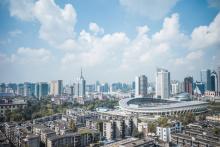
CHENGDU
The capital of China’s Sichuan Province, Chengdu is located on the plains of the Yangtze, Asia’s longest river, and has a population of over 20 million inhabitants. Chengdu’s thriving economy is driven by manufacturing and technology. The city is also quickly establishing itself as the creative and cultural heart of western China, and is famed for its giant panda reserve.
Chengdu’s population is predicted to grow by 8-10 million by 2035. To better absorb this massive increase, the city has put into place a “Park City” strategy, challenging traditional urban development norms to create cities within parks. The Park City concept envisions the city as a network of blue and green spaces that protect biodiversity, reduce energy consumption, and provide enhanced urban services to residents. The concept complements Chengdu’s decarbonization strategy as well as the city’s 2016-2035 urban development plan.
URBANSHIFT’S INTERVENTION
Chengdu hosts a diverse wetland system, which plays a crucial role in protecting the city’s water resources and biodiversity. UrbanShift will support Chengdu to map its natural assets, with a focus on wetlands, and involve the private sector to finance green investments. Our project will also support ecological connectivity with the panda reserve and other national parks, and formulate an integrated management strategy for the Tuojiang River Basin, an important tributary of the Yangtze.
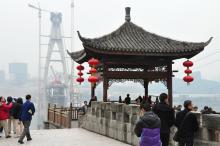
CHONGQING
Perched on the shores of the Yangtze River, Chongqing is southwestern China’s primary trade and transportation hub. It is also one of the world’s largest megacities, with over 30.17 million inhabitants.
While the automobile industry has been the backbone of Chongqing’s economy, the city has recently implemented a high-quality development strategy, focused on innovation, research, and the intelligent transformation of traditional industries.
Chongqing currently faces two main development challenges – given its hilly topography, only 6% of flat land is suitable for spatial urban expansion. The city is also highly prone to flooding; in 2020, torrential rains caused the Yangtze to overflow, resulting in the loss of at least $26 billion and many communities displaced in and around Chongqing.
URBANSHIFT’S INTERVENTION
In Chongqing, UrbanShift will work to ameliorate the impacts of urban sprawl in Bishan District, improving its spatial development strategy through ecological planning and nature-based solutions. At the same time, the project will support the historical Yuzhong District in pioneering an integrated energy management system.
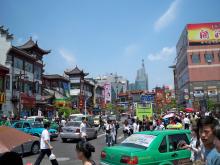
NINGBO
Situated in a low-lying coastal plain of the Yangtze River Delta in northeast Zhejiang Province, Ningbo has been an important port city since the Tang Dynasty and is one of the world’s largest international ports by cargo tonnage.
Exports have played a major role in the growth of Ningbo’s economy. Today, the city possesses a more diversified economic structure, including the provision of logistics, finance and e-commerce services.
Ningbo suffers from typhoons and flooding on an annual basis, resulting in severe economic damages and routinely bringing the city to a standstill. Moreover, due to Ningbo’s energy-intensive export industry, the city’s per capita carbon emission is 15.5 tons – double the national average. Hence, decoupling economic growth and energy use is a priority in Ningbo.
URBANSHIFT’S INTERVENTION
UrbanShift will support Ningbo to develop a city-wide biodiversity strategy, including natural habitat rehabilitation and wetland protection. We’ll also provide ecological spatial planning support through natural capital accounting systems and nature-based solutions. Additionally, the project will promote retrofit schemes in selected communities within Haishu District and help create a carbon emissions monitoring and indicator system to facilitate zero-carbon development.
CHENGDU-CHONGQING ECONOMIC CIRCLE (CCEC)
The Chengdu-Chongqing Economic Circle is China’s ambitious economic blueprint to accelerate growth in the less developed western region. It includes 31 cities and 113 small towns and counties and makes up 1.9% of the country's total land area. In 2019, the economic circle had a permanent population of around 96 million and a GDP of $984.7 billion.
The CCEC is a vital part of the national government’s efforts to develop economically robust urban agglomerations and presents an opportunity to demonstrate green, low-carbon urban growth at a wider scale. Investing in transport infrastructure for the Chengdu-Chongqing region is a particular priority of the CCEC.
URBANSHIFT’S INTERVENTION
As the CCEC is a newly formed agglomeration, UrbanShift will support the region’s ecological connectivity and restoration plans by building on the interventions in Chengdu and Chongqing.
We’ll also formulate a biodiversity and plastic waste management strategy for the CCEC, and help develop a coordinated regional approach to carbon emissions peaking and neutrality.
PROJECT BUDGET
- GEF Grant: $26.9 million
- Co-financing: $300.6 million
Implementing Agency
The UrbanShift project in China is implemented by the World Bank in partnership with the China Center for Urban Development (CCUD), People’s Government of Chengdu Municipality, People’s Government of Chongqing Municipality, and People’s Government of Ningbo Municipality, under the National Development and Reform Commission (NDRC).
LOCAL TEAM
UrbanShift's World Bank partners in China are represented by the following staff members and consultants.
Country Coordinator
Ji Xu coordinates UrbanShift's capacity-building activities in China.
Related Content
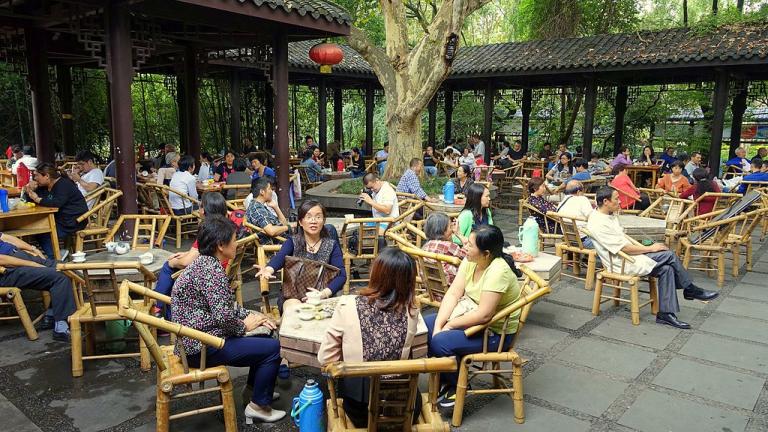
World Bank Approves UrbanShift’s Local Project in China
One of nine GEF-funded country interventions, the UrbanShift China project aims to integrate biodiversity conservation, nature-based solutions and carbon neutrality into the development pathway of three participating cities.

How Ningbo is Paving the Way for Sustainable Development and Tourism
With the revitalization of Hangzhou Bay Wetland Park, Ningbo is proving the value of biodiversity-focused urban development.
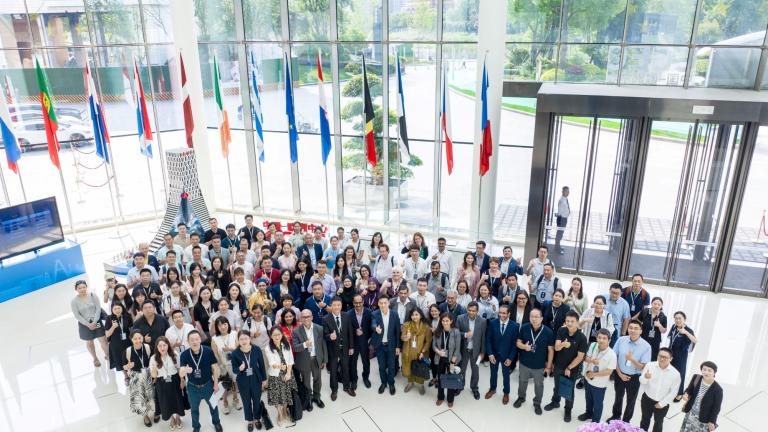
Empowering Cities to Shape Climate Goals: Lessons from the UrbanShift China City Academy
On 1-3 July 2025, the Academy brought together over 120 participants from cities in China, India, Malaysia, Mongolia, and the Philippines, alongside national government representatives.

UrbanShift China City Academy
City officials engaged with regional and global experts to strengthen their knowledge and capacity to implement sustainable urban practices.
